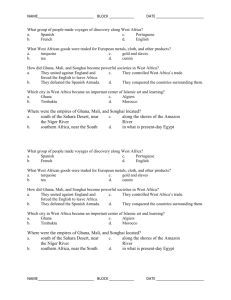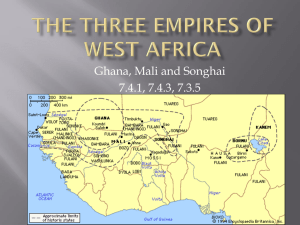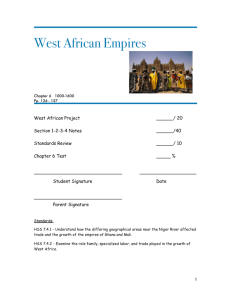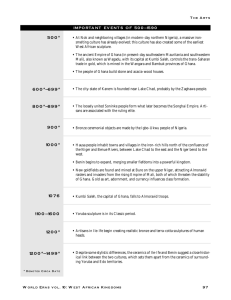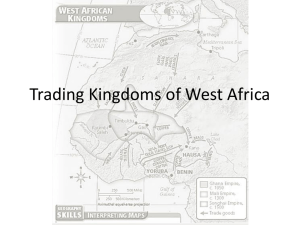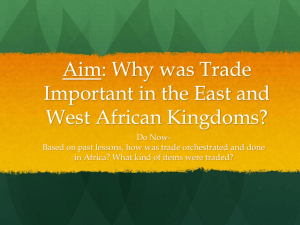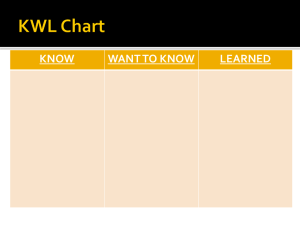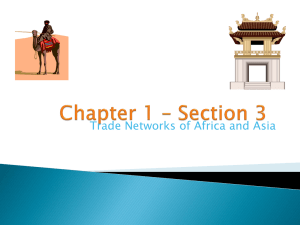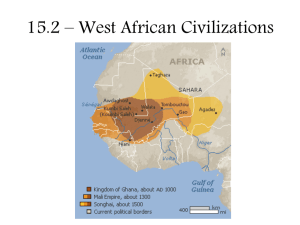The Gold Empires of West Africa
advertisement
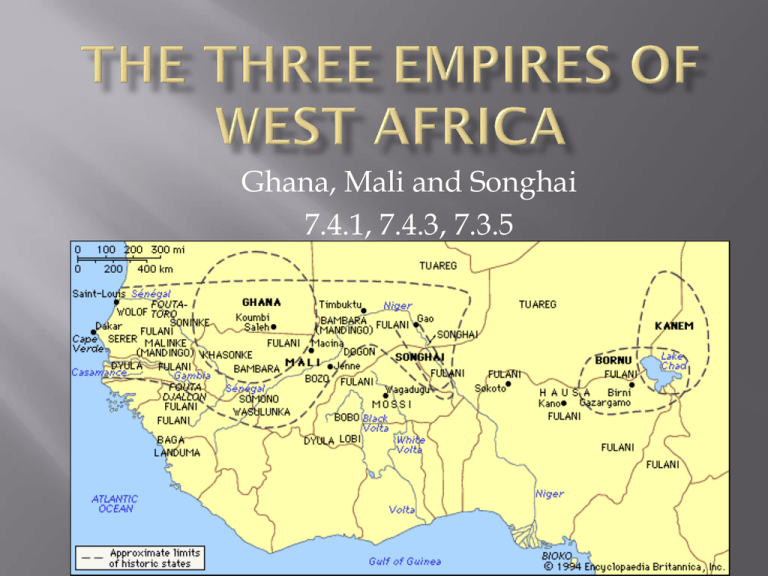
Ghana, Mali and Songhai 7.4.1, 7.4.3, 7.3.5 Ghana: Chapter 6, Section 1 Rise of Ghana One of three great civilizations that arose along the Niger River Ghana was located between salt and gold mines Ghana’s power came from their use of iron weapons to conquer neighboring tribes and for farming along the Niger River The Nok people from this region were the first to use iron to make farming tools and weapons for defense Salt merchants from North Africa crossed the Sahara Desert to trade with gold miners south of Ghana Ghana taxed traders passing through their trade route Salt is needed to preserve and flavor food, and to restore PH balance from sweating Koumbi (Kumbi), was a trading center and a capital of Ghana. It became the wealthiest city in W. Africa Almoravids, a group of strict Muslims, believed it was their destiny to take over Ghana. They fought for 14 years, weakening Ghana Overgrazing - Almoravids brought herding animals to Ghana. The herds ate the grass and left the ground exposed to sun, which made soil hard to farm Internal Rebellion - Rebels weakened Ghana and it was eventually attacked by neighbors Territory twice the size of Ghana, along the Niger River King Sundiata conquered Ghana and led Mali to become a powerful trading empire Sundiata concentrated on agriculture, rice, onions, beans, cotton Economy based on trade, that crossed the Sahara (subSaharan trade) with help of the Berbers The Berbers - A group of northern African people that lead desert caravans through the Sahara Mali discovered more gold mines and became the most powerful kingdom in Africa The Niger River became a busy highway for all kinds of trade Another of Mali’s greatest rulers during the empire’s height Was a devout Muslim, but he tolerated other religions (allowing non-Muslims to keep their own religion) Made an impressive pilgrimage to Mecca with 50,000 people. Slaves carrying gold staffs, 80 to 100 camels carrying 100 pounds of gold In Cairo, Egypt he gave out so much gold that the local gold coin depressed for a decade He became famous and introduced the world to the Mali Empire Muslims scholars impressed by his wealth, were invited to be a part of his Empire Under Mansa Musa’s reign Muslim culture and education flourished He hired architects to build mosques, he sent Muslim scholars to study in Morocco and he stressed the importance of learning Arabic to unify his empire The city of Timbuktu became center for learning After Mansa Musa’s death there was weak leadership Invaders weakened empire and burned schools in Timbuktu The empire had grown so large that it was difficult to control, slowly outer areas began to break away Rise of Songhai: After Mansa Musa died, kings were unable to protect the territory Songhai rises to power after attacking Mali from all sides Sunni Ali organized, strengthened and unified Songhai He unified Songhai by encouraging people to work together, and he participated in both Muslim and local religions Askia the Great rose to power. Songhai became great center for learning Askia welcomed Muslims to trade by making similar laws Songhai grew into the greatest trading empire in West Africa Timbuktu and Djenne were centers of learning and trade Morocco’s rulers captured Songhai’s salt mines; they also wanted the gold in West Africa Songhai would stay around another 150 years, but not the same well-organized empire, instead it became a series of military camps

